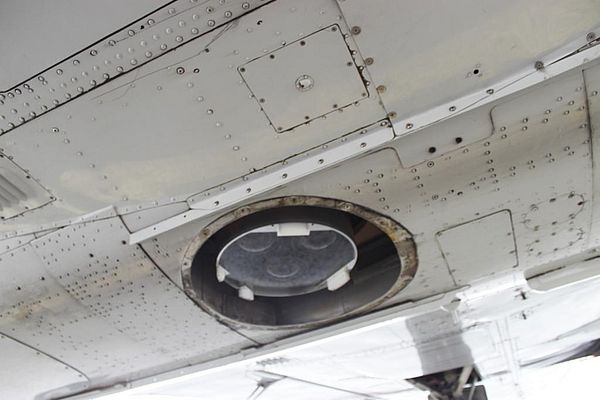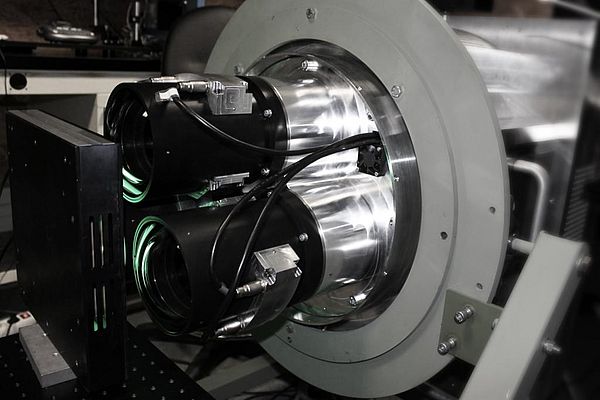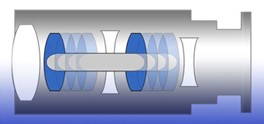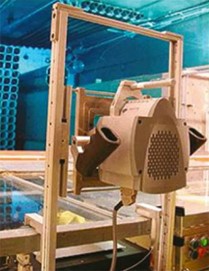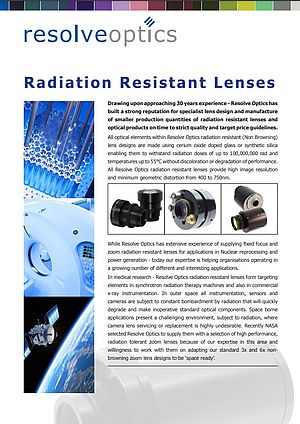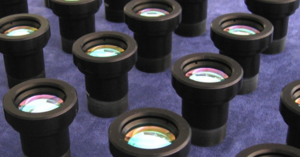IEN Europe: Resolve Optics Ltd develops OEM quantity special lenses and optical designs for small and large high technology businesses. What’s the history behind that?
Pontin: Resolve Optics Ltd was founded by Richard Harvey – an internationally respected Optical Designer. Richard’s original mission for Resolve Optics was for it to fulfil the demand for a company that could design and manufacture bespoke optical systems in small to medium volumes. 20+ years later it is still the case that developing a product that requires bespoke optics can be a time consuming and expensive process. Over the last few decades - Resolve Optics has designed and manufactured for instrument, sensor and camera manufacturers around the world reasonably priced bespoke lens and lens systems to increase their competitiveness and to solve new applications.
IEN Europe: Which are the main areas and market sectors that are benefiting from your specialist lens design and manufacture capabilities?
Pontin: Over the last 20+ years - Resolve Optics has worked in a diverse array of market sectors. Our core markets are Machine vision, Nuclear, Military & Surveillance, Medical and Broadcast.
IEN Europe: Congratulations on recently receiving, in conjunction with your French partner IMAO, the funding award from the EU backed Horizon 2020 scheme. Can you please describe the scope of the project?
Pontin: Resolve Optics Ltd partnered with IMAO and won significant funding from the EU to assist in the development and bring to market a 1 GigaPixel Aerial Survey Camera. These funds are provided to help to improve and perfect the manufacturing, testing and supply of, in the case of Resolve Optics the groundbreaking lenses required for the camera and for IMAO the build, set up and testing of the camera. This valuable source of EU funding has enabled us to invest in assembly equipment and a very versatile and accurate MTF and Distortion test table. The investment in such equipment will bring significant advantages to all our customers in terms of assurance of consistent high product quality.
IEN Europe: What is the current state of aerial surveillance cameras and what are their shortfalls?
Pontin: The aim of the IMAO aerial surveillance camera development has been to enable larger, high definition images to be captured. Being able to capture larger images means that less images are required, and larger areas can be covered in less flying time. This equates to a significant reduction in cost of operation for organisations offering aerial surveillance services. Another advance that the IMAO cameras offer is their outstanding resolution - as it enables very accurate measurements to be taken from the captured images.
IEN Europe: I understand that you have already developed a 660MPixel aerial surveillance camera in conjunction with IMAO. What part did Resolve Optics play in this development and how has the market reacted to this product?
Pontin: The 660 Mpixel Camera was developed as a prototype/proof of concept device ahead of our ultimate aim to develop a 1 GigaPixel aerial surveillance camera. Resolve Optics designed and developed the three ultra large format high resolution lenses that lie at the heart of each camera. The 660Mpixel camera has been received extremely well within the international aerial photography community.
IEN Europe: The Horizon 2020 funding is to develop a next generation 1GPixel resolution ultra-large format aerial surveillance camera – what benefits will this new product offer and who will benefit most from its use?
Pontin: The aim of the 1GigaPixel IMAO camera is to enable even larger, high definition images to be captured. The 1 Gigapixel camera will produce high quality images significantly larger than the standard image size generated by other large format cameras on the market. Consequently, not only will less images be required for geographic data mapping but also these images require less processing time saving operators time and money. As I mentioned previously the higher resolution will also beneficially enable very accurate measurements to be taken from the captured images. This development will provide a new benchmark for any organization involved with aerial photography.
IEN Europe: Working with cooperative partners in other countries, how does Resolve Optics manage this and ensure project goals are achieved on time?
Pontin: Collaborating with partners and customers in other countries is no longer a problem with modern communication technologies. We use VOIP teleconference systems to conduct interactive meetings with our partners and customers. These systems enable us to share files and desktops. This ensures that we are all looking at the same document, specification or 3D model. When used properly VOIP teleconferencing can be almost as good as a face to face meeting. With projects that are in the design process we regularly provide customer with updated 3D models (SolidWorks) so they can check the new bespoke lens will interface correctly with their camera or application. To ensure projects keep scheduling we use all the aforementioned tools, plus of course email communication and even face to face progress meetings. It really depends on what the customer requires.
IEN Europe: Thank you for this interview Mr. Pontin!
Marta Roberti


